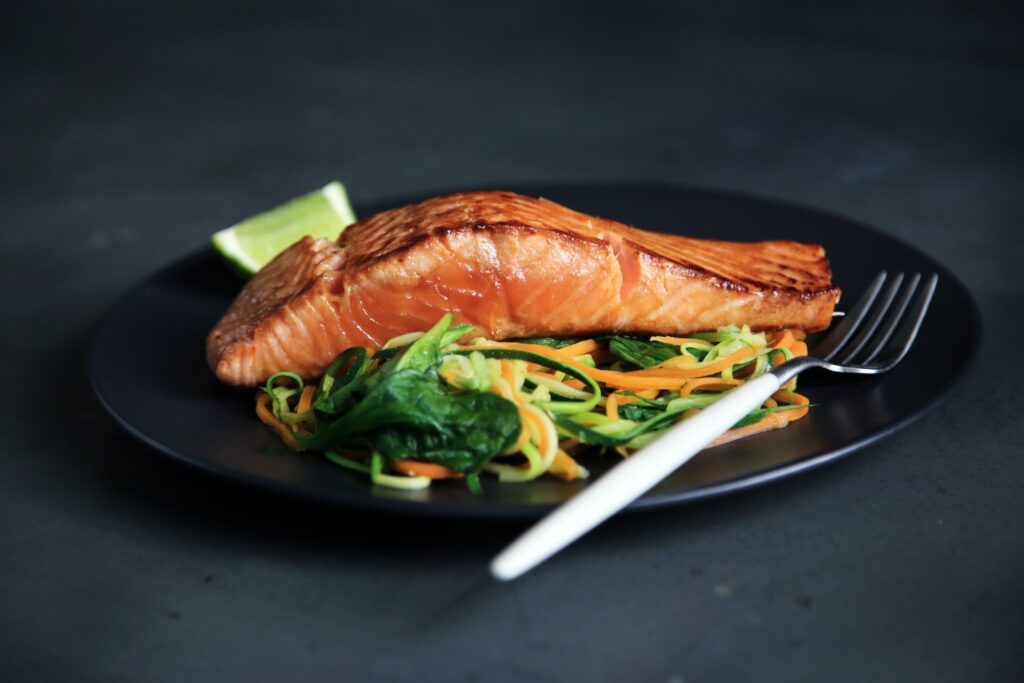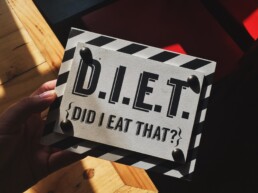Losing weight is a common goal for many people, but with so much information out there, it can be hard to know what to believe. I wouldn’t be surprised if you feel confused and overwhelmed with all the conflicting advice out there. From fad diets and extreme workouts to conflicting ideas from experts, it can be difficult to know what works and what doesn’t. Unfortunately, this confusion can lead to frustration, discouragement, and even giving up altogether. Is this where you are right now? Have you tried many different approaches and found that you are right where you started?
There are countless weight-loss myths circulating, from the idea that you have to eat less to lose weight, to the notion that cardio is the only way to burn fat. While some of these myths may seem plausible, the truth is that they can actually do more harm than good when it comes to achieving sustainable weight loss.
In this post, I will debunk three common weight-loss myths and offer some practical tips for achieving your health and fitness goals. So, whether you’re just starting out on your weight-loss journey or looking to make some changes to your current routine, read on to learn more about the truth behind these common weight-loss myths.
Myth #1: Carbs are the enemy
Have you ever heard the saying that “carbs are the enemy” when it comes to weight loss? It’s a common myth that we’ve all heard before, but the truth is a bit more complicated. In this section, I’m going to take a closer look at this myth and separate fact from fiction.
It’s not uncommon to hear that cutting out carbs is the way to go for weight loss. After all, low-carb and keto diets are the rage today. Sure, reducing your carb intake can help, but it’s not the only factor. Did you know that carbs provide your body with the energy it needs? Without them, you might feel sluggish and tired. Also, not all carbs are created equal. Foods like whole grains, fruits, and vegetables are sources of healthy carbs that should be included in a balanced diet. Additionally, these types of carbs are rich in vitamins, minerals, and fiber that are essential for good health.

On the other hand, there are refined or simple carbs like white bread, pasta, and sugary drinks that are linked to weight gain and other health problems. These types of carbs are usually high in calories and low in nutrients, making them a less healthy choice.
Now, let’s talk about the role of carbs in weight loss. It’s true that reducing your carb intake can help you lose weight, but it’s not the only factor. When you eat carbs, your body breaks them down into glucose, which is used for energy. If you consume more glucose than your body needs, it will be stored as fat. That’s why it’s important to be mindful of your overall carbohydrate intake.
Here are some examples of healthy complex carbs that can be included in your diet during a weight loss phase:
- Whole grains: These include whole wheat, brown rice, quinoa, and oats. They are rich in fibre, which can help you feel full and satisfied, and they also provide essential vitamins and minerals.
- Fruits: Fruits like apples, berries and oranges are all great sources of healthy carbs. They are also rich in fibre and antioxidants, which can help protect your body from disease.
- Vegetables: Vegetables like broccoli, spinach, okra and carrots are all great sources of healthy carbs. They are also rich in vitamins, minerals, and fibre, which can help keep you feeling full and satisfied.
- Legumes: Legumes like lentils, chickpeas, and black beans are a great source of healthy carbs, as well as protein and fibre. They can also help regulate blood sugar levels and improve digestion.
In conclusion, the idea that “carbs are the enemy” is a myth. While it’s true that some types of carbs should be consumed in moderation, there are many healthy sources of carbs that are essential for good health. So, don’t be afraid to include some healthy carbs in your diet, and remember that balance is key when it comes to sustainable weight loss.
Myth #2: Cardio is the only way to burn fat
Have you ever been told that cardio exercise is the only way to burn fat? It’s a common myth that we hear all the time, but the truth is a bit more complicated. In this section, I’m going to take a closer look at this myth and separate fact from fiction.
First, let’s talk about what cardio exercise is. Cardio, short for cardiovascular exercise, refers to any exercise that gets your heart rate up and increases your breathing. This can include activities like running, biking, and swimming.
Cardio exercise is a great way to improve your cardiovascular health, but it’s not the only way to burn fat. In fact, excessive cardio can actually hinder weight loss. This is because too much cardio can lead to a decrease in muscle mass, which in turn can slow down your metabolism. Additionally, excessive cardio can lead to increased cortisol levels, a hormone that can increase fat storage and hinder weight loss.
Sure, cardio can be an effective way to burn calories and lose weight, but it’s not the only option. Strength training is also essential for weight loss because it helps build muscle, which burns more calories than fat. Plus, having more muscle can improve your overall health and make you feel more confident in your body. Do you include strength training in your workout routine?
Resistance training, also known as weightlifting or strength training, is one of the best ways to build muscle and burn fat. When you lift weights, your body burns calories both during and after your workout. This is because weightlifting helps build lean muscle mass, which requires more energy to maintain than fat tissue. This means that the more muscle you have, the more calories you will burn, even when you’re at rest.

In addition to weightlifting, there are other forms of exercise that can help you burn fat and improve your overall health. Yoga and Pilates are great options because they help build strength and flexibility, which can help prevent injuries and improve your posture. High-intensity interval training (HIIT) is another effective way to burn fat and build muscle. HIIT involves short bursts of high-intensity exercise followed by periods of rest or low-intensity exercise. This type of workout can be done with any form of cardio, such as running, cycling, or jumping jacks.
Here are 5 easy ways to add fat-burning exercises to your routine:
- Take the stairs instead of the elevator. This simple change can help you burn extra calories throughout the day.
- Go for a walk during your lunch break. Walking is a low-impact exercise that can help you burn fat and reduce stress.
- Do bodyweight exercises at home, such as push-ups, squats, and lunges. These exercises can help you build muscle and burn fat without any equipment.
- Incorporate high-intensity interval training (HIIT) into your workouts. HIIT involves short bursts of high-intensity exercise followed by periods of rest or low-intensity exercise. This type of workout can be done with any form of cardio, such as running, cycling, or jumping jacks.
- Try a new form of exercise, such as yoga or Pilates. These forms of exercise can help you build strength, improve flexibility, and reduce stress.
In conclusion, the idea that cardio is the only way to burn fat is a myth. While cardio exercise is a great way to improve your cardiovascular health, there are many other forms of exercise that can be just as effective, if not more effective, at burning fat and building muscle. So, don’t be afraid to mix up your workout routine and try new forms of exercise to achieve your weight loss and fitness goals. And remember, too much cardio can actually hinder your progress, so it’s important to find a balance that works for your body.
Myth #3: You have to eat less to lose weight
Have you ever tried to lose weight by eating less? It’s a common myth that eating less is the only way to lose weight. In this section, I’m going to take a closer look at this myth and explore some alternatives.
While it’s true that you need to create a calorie deficit to lose weight, eating too little can actually hinder your progress. When you eat too little, your body goes into starvation mode. This means that your metabolism slows down, making it harder for you to burn calories and lose weight. It can also lead to feelings of fatigue, dizziness, and even fainting. Instead of drastically cutting your calories, focus on eating a balanced diet that includes plenty of protein, healthy fats, and fibre.
Did you know?
RMR stands for Resting Metabolic Rate, which is the number of calories your body burns at rest. This includes the calories your body needs to function properly, such as breathing and circulation. When you cut calories too drastically, your body goes into survival mode, and your RMR decreases as a result. This means that your body is burning fewer calories at rest, which makes it harder to lose weight. In fact, studies have shown that cutting calories too drastically can actually lead to a reduction in RMR, making it even harder to lose weight in the long run. That’s why it’s important to focus on making sustainable lifestyle changes instead of quick fixes that could do more harm than good.
So, what’s the solution? Instead of eating less, try eating smarter. Focus on making healthy food choices that are high in nutrients and low in calories. This means filling your plate with plenty of fruits and vegetables, lean protein sources like chicken and fish, and whole grains.

But what if you’re already eating healthy and exercising regularly, and you’re still not seeing the results you want? In this case, it might be worth exploring other factors that can impact weight loss, such as stress, sleep, and hormone imbalances.
Meanwhile, the idea that you have to eat less to lose weight is a myth. While eating too many calories can certainly contribute to weight gain, cutting calories too drastically can have negative effects on your body and your weight loss efforts. Instead, focus on eating smarter, incorporating regular exercise, and exploring other factors that may be impacting your weight loss goals. Remember, everyone’s body is different, so what works for one person may not work for another. Listen to your body and make choices that support your overall health and well-being.
In conclusion, it’s important to understand the truth behind these weight-loss myths to achieve long-term success. Remember, weight loss is not a one-size-fits-all solution, and there is no quick fix or magic pill. Don’t believe everything you hear, and don’t rely on quick fixes or extreme diets.
By debunking these weight-loss myths, I hope I have shown you how to make informed decisions about your health and fitness goals. Remember, the key to long-term success is to create a healthy and sustainable lifestyle that works for you. This means incorporating a balanced diet, regular exercise, and other healthy habits into your daily routine. Don’t forget to listen to your body, stay patient, and celebrate the small victories along the way. And always remember, it’s never too late to start making positive changes for your health and well-being. So, what’s your favourite way to stay active and healthy? Whether it’s going for a walk, trying a new workout class, or cooking a healthy meal, make it a priority to prioritize your health and well-being every day.
SHARE

Madhavi Shilpi
Nutritionist
Prediabetes Coach
Related
Why Early Diagnosis of Prediabetes Is Key to Preventing Type 2 Diabetes
Introduction Imagine this: you’re feeling pretty healthy. Maybe you’re a…
Fibre: Unlocking the Secrets to Better Health
Are you ready to explore the fantastic world of fibre? If you're not already a…
Weight Loss: the Diet vs Exercise debate
When most people think of weight loss, they immediately imagine themselves…
How to break an Intermittent Fast
Intermittent fasting is a popular dietary approach that involves alternating…
Intermittent Fasting 101
Fasting has been practiced for centuries for religious and spiritual reasons.…
Why do diets fail?
Why does ‘lose 5 kg in 5 weeks’ turn into a mirage each time you chase it? Why…
What is Prediabetes?
Have you been diagnosed with Prediabetes? Are you wondering what it actually…







